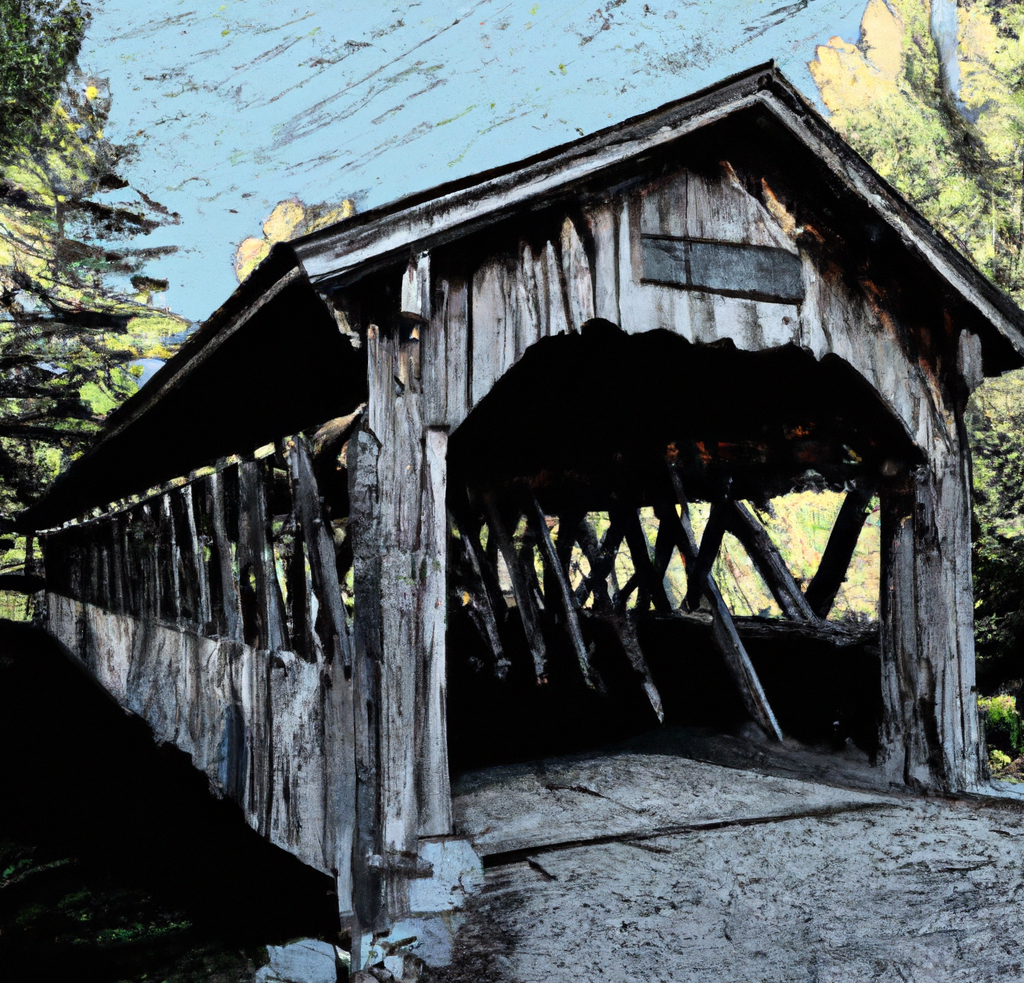Vermont is known for its picturesque covered bridges that dot the countryside, adding charm and nostalgia to the landscape. Here are some notable covered bridges in Vermont:
- The Cornish-Windsor Covered Bridge: Spanning the Connecticut River, the Cornish-Windsor Covered Bridge connects Windsor, Vermont, with Cornish, New Hampshire. Built in 1866, it is the longest wooden covered bridge in the United States.
- The West Arlington Covered Bridge: Located in Arlington, this bridge is also known as the Bridge at the Green. It dates back to 1852 and is one of Vermont’s most photographed covered bridges.
- The Pulp Mill Covered Bridge: Situated in Middlebury, the Pulp Mill Covered Bridge is an iconic landmark. Built in 1820, it spans the Otter Creek and is listed on the National Register of Historic Places.
- The Taftsville Covered Bridge: Found in Woodstock, the Taftsville Covered Bridge is one of Vermont’s oldest covered bridges. It was built in 1836 and crosses the Ottauquechee River.
- The East Montpelier Covered Bridge: Located in East Montpelier, this bridge dates back to 1844 and is known for its charming red color. It spans the Winooski River and is a popular spot for photography.
- The Emily’s Bridge: Situated in Stowe, Emily’s Bridge, also known as the Gold Brook Covered Bridge, is famous for its ghostly folklore. It was built in 1844 and is rumored to be haunted.
- The Silk Covered Bridge: Found in Bennington, the Silk Covered Bridge is the only surviving example of a lattice truss bridge in Vermont. It was built in 1840 and is now part of the Bennington Museum’s grounds.
These are just a few examples of the many covered bridges that can be found throughout Vermont. They offer not only architectural beauty but also a glimpse into the state’s history and rural charm.
